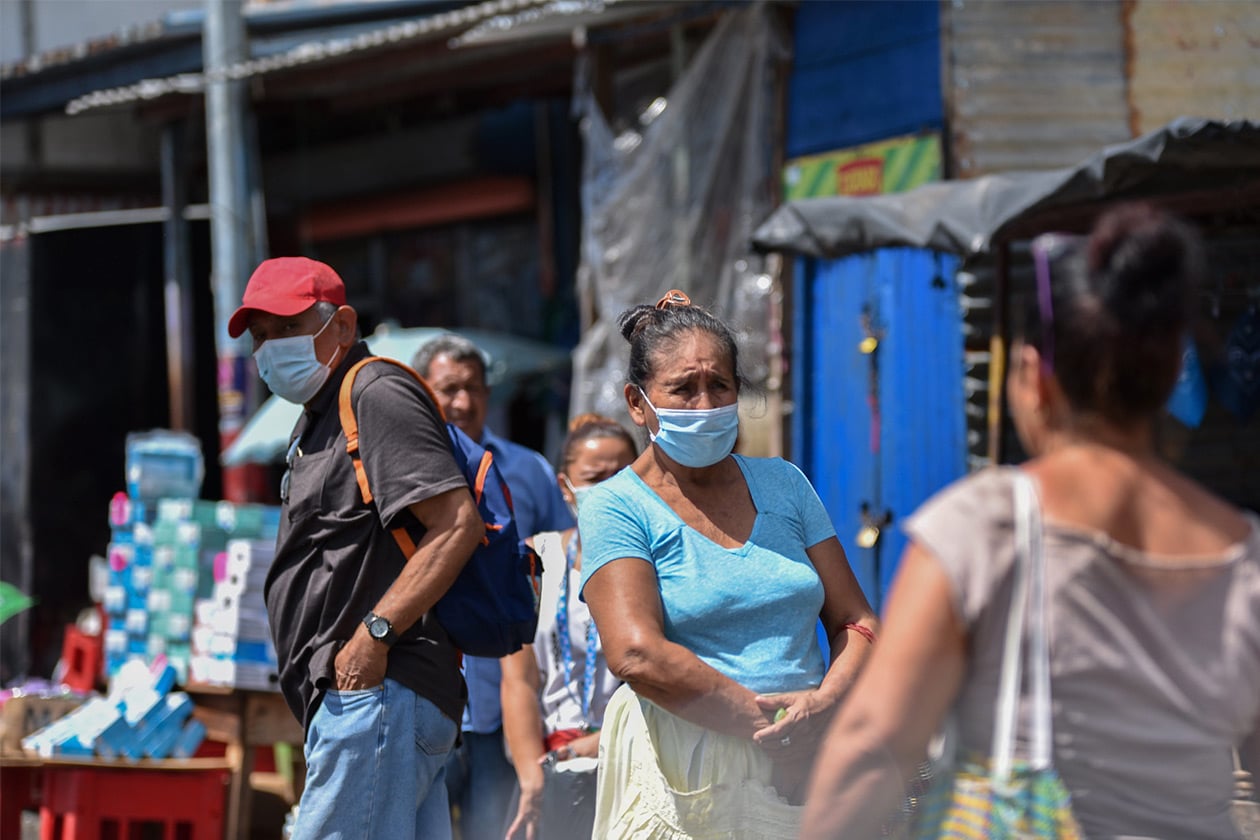During the first twelve days of the year -from December 30, 2021 to January 12, 2022- 66 new suspected cases of covid-19 were identified, indicated the Citizen Observatory in its first report of 2022. At the same time, it warned about the ” relaxation” of prevention measures that increases the risk of contagion, and much more, in the face of the threat of the new omicron variant, whose presence in national territory has not yet been confirmed by the health authorities.
“Although the circulation of omicron, the new variant of concern of the SARS-CoV-2 virus in the country, has not been officially reported, in the last week health service providers have reported an increase in cases that present symptoms characteristic of the infection. by omicron, which makes us suspect that this variant may be circulating in the country”, reported the Observatory.
Likewise, he demanded that the Minsa inform the population about the variants that circulate in the country and, especially, about omicron. “This would help individuals, families and communities to be aware of the risk they are exposed to and take the necessary preventive measures to stop transmission.”
The fortnightly data collected by the Observatory indicate a slight growth in new infections. In the first fortnight of December there were 33; in the second, 45 and currently, 66. This rate coincides, in a certain way, with the behavior warned by independent medical sources, who began treating infections in families with mild symptoms since the end of December.
The Observatory recalls that, although the number of cases is lower -compared to previous months-, there are factors that expose the population to new infections, among them, the promotion of crowds, limited access to diagnostic tests, vaccination coverage (46.8% according to PAHO) and the circulation of the other four variants of the virus: alpha, beta, delta and gamma.
For its part, the Ministry of Health (Minsa) has maintained the downward trend of new infections. Until January 11, it recorded 76 new cases, a behavior that contrasts with the increase in infections that other Central American countries are experiencing due to the circulation of omicron. This variant can be identified by the Nicaraguan authorities, but they have not yet reported on the real situation of the pandemic in the country.
Two waves of infections in 2021
In 2021, “two waves were clearly identified”: one between April and July, with a peak of 2,341 cases in May, and a second “more severe” wave. This was presented from August to October. Its highest point was in September, with the report of 6,510 infections, detailed the Observatory.
Although there was never an official acknowledgment of the resurgence of cases, the August wave was impossible for the Minsa to ignore. The demand for hospitalizations, oxygen tanks and requests for financial support on social networks by relatives of patients who were fighting the pandemic were some indicators of the seriousness of the situation.
According to the Observatory, as of January 12, 2022, a cumulative of 31,392 suspected cases of covid-19 and 5,970 deaths have been reported. Meanwhile, official figures indicate 17,965 cases and 219 deaths.
The Minsa maintains in its weekly report the recognition of a single death attributable to covid-19, despite the fact that specialists have said that it is statistically unlikely. Meanwhile, the Observatory points out that in the current period they did not receive reports of new suspicious deaths, including health personnel.
“Since November 17, 2021, no reports of new cases have been received, nor new deaths. among health personnel with associated or presumptive symptoms of covid-19″, they pointed out. At the same time, they assure that they continue to receive information on infections in minors. “In the In most of these cases infection is also reported in one or more adult members of the nucleus family”.

















